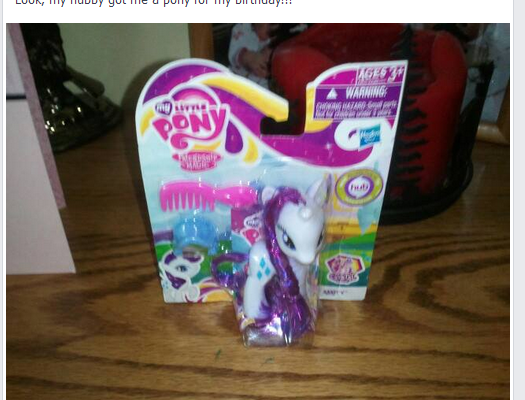LRN got hacked this morning. Thankfully, I backup weekly and subscribe to my own RSS feed. 20 minutes to total restoration.
Twitter Weekly Updates for 2010-06-26
- RT @ScottATaylor: The Guys on "Pickers" should just follow the "Hoarders" teams around- perfect mashup #
- PI/PNK test: http://su.pr/2umNRQ #
- RT @punchdebt: When I get married this will be my marital slogan "Unity through Nudity" #
- http://su.pr/79idLn #
- RT @jeffrosecfp: Wow! RT @DanielLiterary:Stats show 80% of Americns want to write a book yet only 57% have read at least 1 bk in the last yr #
- @jeffrosecfp That's because everyone thinks their lives are unique and interesting. in reply to jeffrosecfp #
- @CarrieCheap Congrats! #CPA in reply to CarrieCheap #
- @prosperousfool I subscribe to my own feed in google reader. Auto backup for in between routine backups. Saved me when I got hacked. in reply to prosperousfool #
- @SuzeOrmanShow No more benefits? I bet the real unemployment rate goes down shortly thereafter. in reply to SuzeOrmanShow #
- Losing power really make me appreciate living in the future. #
Insane Incentives
Spring is in the air.

At my son’s school, that means it’s time for the Minnesota Comprehensive Assessment tests. These are the standardized tests created by the No Child Left Behind Act that determine if a school is doing its job in educating children. If too many kids have lousy scores, the school gets put on the “Adequate Yearly Progress” list and will eventually get penalized financially.
That creates a perverted incentive in the school system. The main metric for a publicly-funded school’s success in Minnesota is the MCA. If a school can churn out illiterate trench-diggers, they will get increased funding as long as the test scores are good.
For a full two weeks before this test, the school effectively shut down the education program to prepare for the MCA test. That’s two weeks of studying for a set of standardized tests that focus on reading, writing, and arithmetic. I’m a fan of schools prioritizing the three Rs over other subjects, but that’s not what they did.
They spent two weeks studying testing strategies, not the material contained in the test.
In science class, they covered essential scientific elements like “Answer all of the easy questions first, so you can go back and spend time on the hard ones later.”
Spanish class covered verb usage similar to “When the time is almost out on the test, answer ‘C’ for all of the hard questions you have left, que?”
They weren’t being educated, they were learning the most effective way to solve a test to gain funding for next year.
For 2 weeks.
That’s not reading practice, or reviewing the parts of speech, or covering the necessary math skills. It’s “This is a #2 pencil. This is a circle. Practice until lunch.”
Is this really what NCLB was trying to accomplish? Standardized tests to measure school proficiency should be a surprise. Let’s randomly send in test proctors to take over a school for a day and see what the kids have actually learned.
Whose Line Is It Anyway? Why do some shows return from the dead?

Watching TV in the summer used to mean surfing channels of reruns, but lately there seems to be a slew of “new” shows that are repeating old ones. Networks and cable channels are bringing back previously popular shows such as “Whose Line is it Anyway?”, “Hawaii Five-O”, and “Dynasty”. While some people are thrilled that their favorite shows are back, a lot more of us are wondering why we need to keep rehashing the past.
These factors mean that TV stations are not very willing to take risks with new shows. A new drama or science fiction show can take millions of dollars to produce, and in some cases it will be pulled within a few episodes if it fails to catch on. When reviving an old show, a network has some guarantee that it will be popular. While not every remake catches on (Charlie’s Angels anyone?), a remake will usually attract enough interest to make the first episode a success.
The costs to produce these shows are also much lower than “new” shows. In many cases, networks already own the property rights to the show as well as contracts with many of the former actors, directors, and producers. In several cases, they also have access to props, costumes, and set pieces. Because of this, they can produce a pilot for a much lower costs than a “new” show.
Finally, advertisers like the idea of bringing back a show. While a network usually has to struggle to find sponsors for shows that don’t have a full season of Nielsen data to show, they can easily sell a show that advertisers are already familiar with. Furthermore, advertisers like that they know what to expect. Without seeing a single episode, an advertiser can accurately guess at the demographic that will be attracted to the show just by looking at the data from the original show. Because advertisers are familiar with the plot of these shows, they are also more willing to negotiate for product placement within the show itself. In some cases, advertisers have even suggested how their product could be incorporated into an episode before the first script is even finalized.
Related articles
Horseback Riding Lessons
For the past couple of years, my daughters have been riding in horse shows with a local saddle club. We’ve been lucky in that my wife’s cousin has let us borrow her horse for the shows, so costs have been minimal.
Unfortunately, that horse isn’t available this year. We knew that a few months ago, so the plan was to take a year off from the shows and focus on lessons, to get the girls some real skills. We found a great instructor at a stable about 30 miles from our house. Since we live less than two miles from the border of the biggest city in the state, that’s a comparatively short drive.
We pay her $200 per month for 1 lesson per week for both girls. They each get 30-45 minutes on the horse during each lesson.
Now that show season has started, the plan seems to have changed. The girls will be riding a different borrowed pony tomorrow. The shows cost about $50 for registration, lunch, and gas. Our club has 1 show per month, but my wife has assured me they’ll only be hitting three shows this season and limiting the number of events to keep the cost down.
The direct costs aren’t too bad, but there’s a problem with keeping-up-with-the-Joneses accessorizing. Vests and boots and helmets and belts and shirts, oh my.
I’d guess our costs for the summer will be $300 per month.
One thing we’ve been considering is buying a pony. We can get an older pony for around $500-1000. Older is good because they are calmer and slower. Boarding the thing will cost another $200 per month. We’ve been slowly accumulating the stuff to own a horse, so I’m guessing the “OMG, he let me buy a horse, now I need X” shopping bill will come to around $1500, but I’ll figure $2000 to be safe. We already have a trailer, a saddle, blankets, buddy-straps, combs, brushes, buckets, rakes, shovels, and I-bought-this-but-I-will-just-put-it-in-the-pile-of-horse-stuff-so-Jason-will-never-notice stuff. We’re certainly close to being ready to buy.
(FYI: If you’re starting from scratch, don’t think you’re going to get into horse ownership for less than $10,000 the first year, and that’s being a very efficient price-shopper.)
So we’re looking at $5400 for a horse, gear, and boarding the first year. If we cancel the lessons, by spring we’d have $2000 of that saved and most of the rest can be bought over time.
On the other hand, if we go that route, we’ll never save enough to buy the hobby farm we’re looking for.
Decisions, decisions. I should just buy a new motorcycle. Within a year, I win financially.








